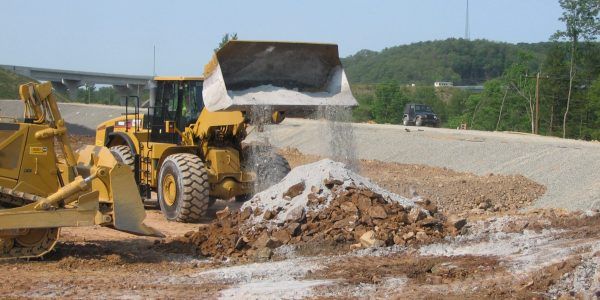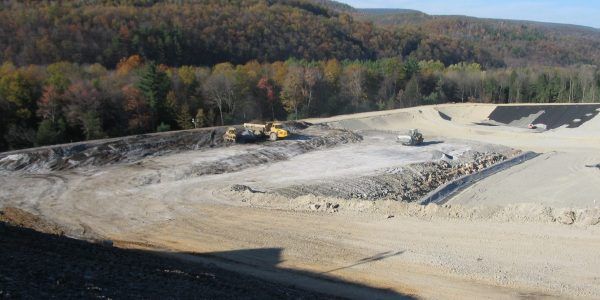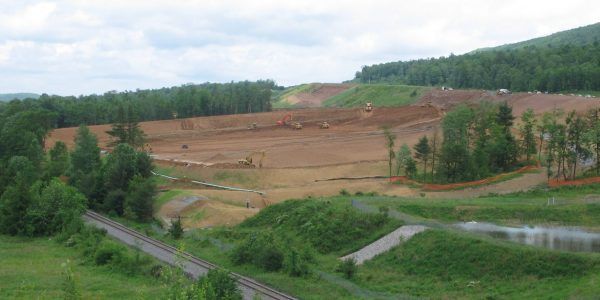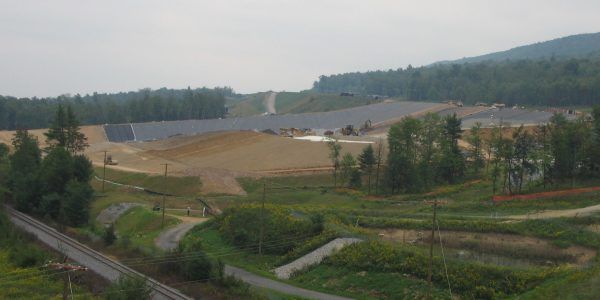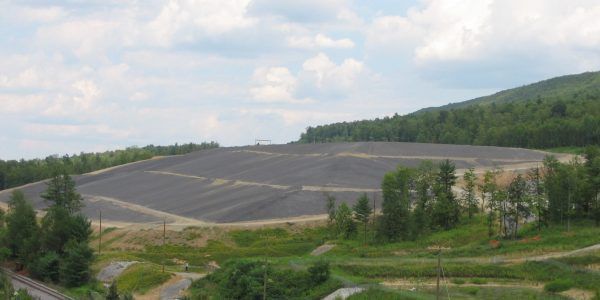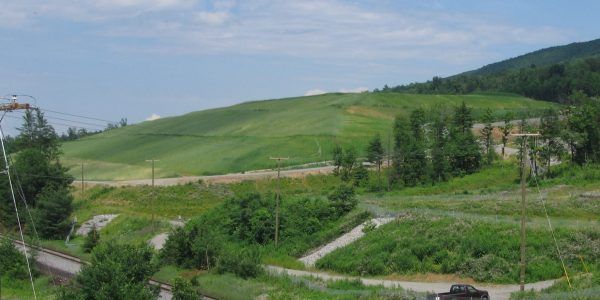Project Description
I-99 Acid Rock Remediation
Centre County, Pennsylvania
We solved a critical environmental problem that halted construction of an interstate highway, and we did it ahead of schedule, under budget, with no risk to our client.
During construction of a key stretch of I-99 in central Pennsylvania, pyritic rock was exposed when large volumes of earth were excavated. When exposed to water, pyrite creates sulfuric acid, which contaminates water supplies, kills aquatic life, degrades concrete and corrodes steel. Iron, aluminum and other metals also are released to ground water and an environmentally sensitive watershed.
WHM was selected by the Pennsylvania Department of Transportation to develop and implement a solution for the most controversial, complex environmental problem faced by the agency: the disposition of 1.5 million cubic yards of what is often called acid rock.
We proposed a turnkey solution: Using the best science, WHM would design, engineer, oversee construction, operate and monitor the success of a lined disposal site known as an engineered rock placement area.
WHM and its team secured permits, overcame public objections, presented the solution to a variety of local and state government officials, worked closely with regulators and participated in a variety of interactions with scientists and the media.
The detailed design of the engineered rock placement area (or ERPA, pronounced URP-uh) incorporated landfill engineering principles including: subsurface investigations, surface water management, placement operations, infiltrate management, construction quality assurance and control, public relations, as well as monitoring, closure and post-closure plans.
We did it at a fixed price, per cubic yard of material, so risks were minimized for the Department of Transportation– which had limited expertise to cope with this situation.
The WHM team selected the disposal site and constructed all layers of the lined facility. The pyritic rock was mixed with baghouse lime to neutralize the acid, then capped with a unique final cover system – a geomembrane welded to the lining system so the pyritic material is completely sealed off from the environment in a “dry tomb.” Finally, there is a unique 4-foot soil cap appropriate for native vegetation of grasses, shrubs and small trees. A thicker than normal cap (4 feet instead of 2) allows use of a more diverse native vegetation, which in turn visually blends the site into its surroundings.
We selected a site where the acid rock wouldn't be hauled past homes. Because that section of highway was not open to traffic, larger, more efficient trucks could be used to haul the 1.5 million cubic yards of pyrite-laden material that existed at 13 sites within the I-99 corridor from the village of Bald Eagle in Blair County to the Mount Nittany Expressway (U.S. 322) in Centre County, just west of State College.
Our reputation, creativity, expertise, partnerships and relationships with the Pennsylvania Department of Environmental Protection and other regulators allowed a massive project to be completed ahead of schedule and under budget. WHM continues to monitor the progress of the water quality and vegetation in the vicinity.

